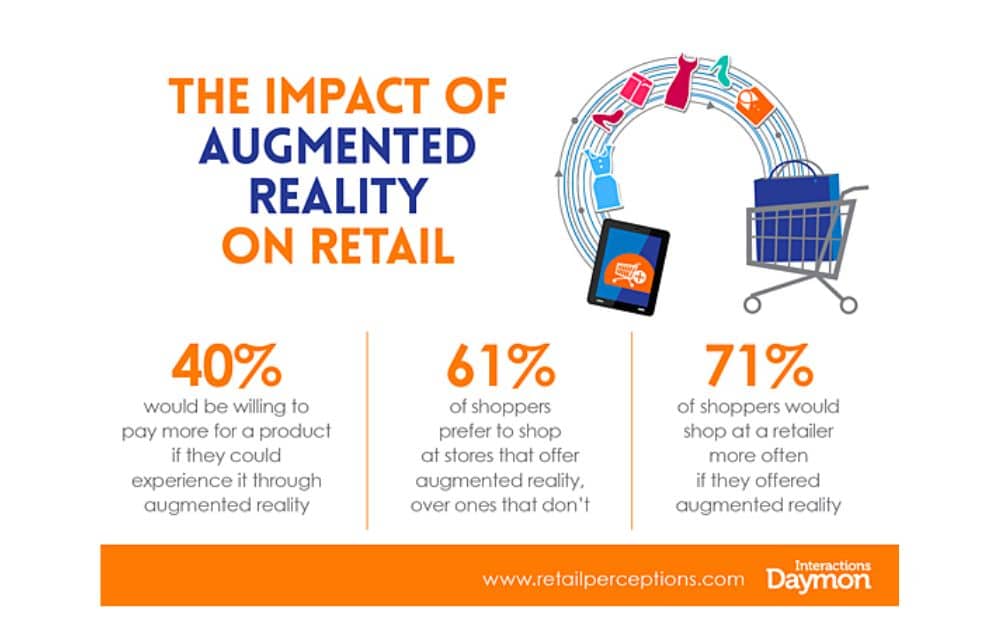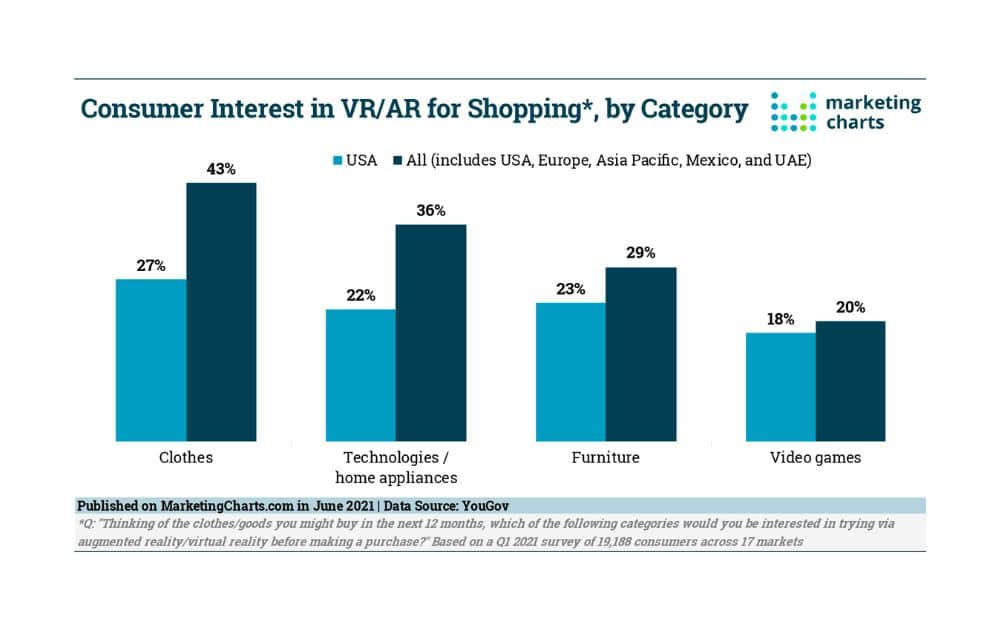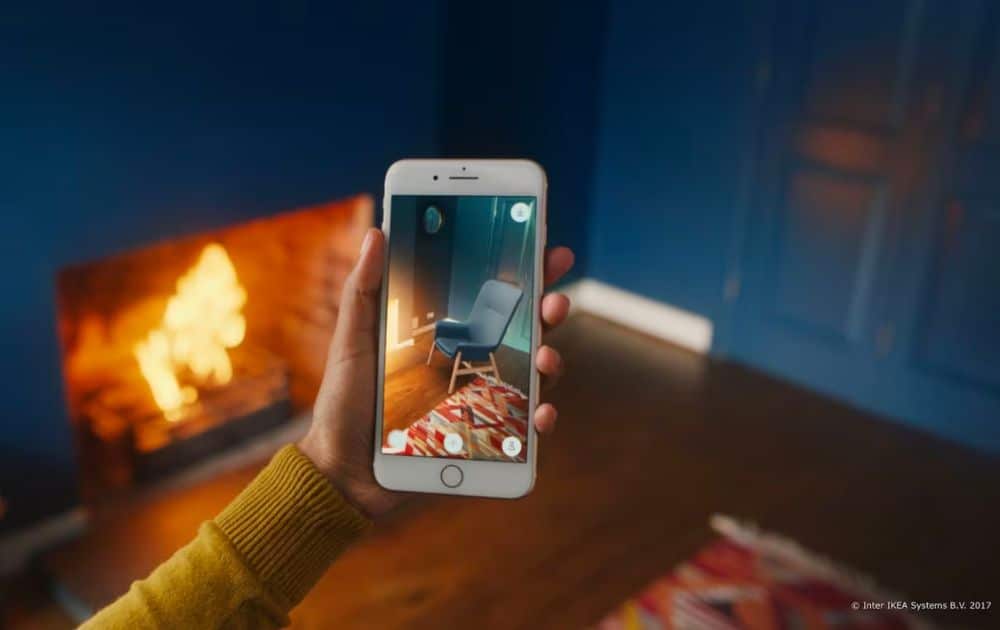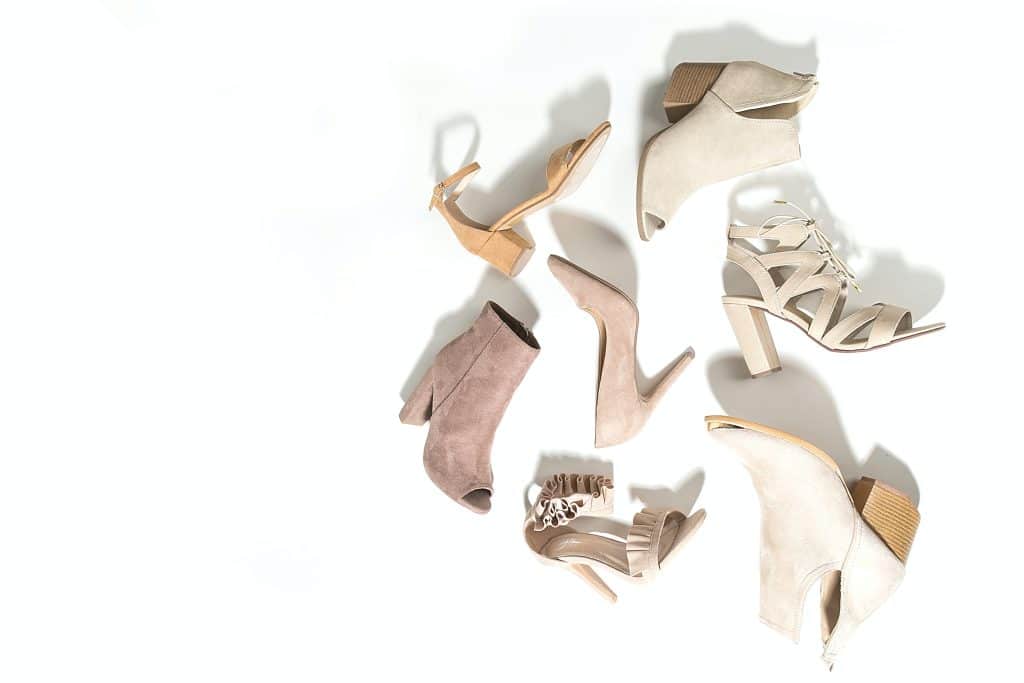Augmented reality in eCommerce isn’t just a technological advancement; it’s a gateway to a new shopping universe. With this technology, shoppers can enter a world where the boundaries between physical and digital realms blur, creating a unique experience that’s...
Augmented reality in eCommerce isn’t just a technological advancement; it’s a gateway to a new shopping universe.
With this technology, shoppers can enter a world where the boundaries between physical and digital realms blur, creating a unique experience that’s not just about browsing but about immersing.
It’s like having a virtual fitting room or a showroom at your fingertips, where the magic of AR meets the convenience of eCommerce.
What is Augmented Reality in Ecommerce?
At its core, augmented reality in eCommerce is a digital technology that superimposes computer-generated imagery onto the real world, creating a composite view that augments the reality we see.
If you think augmented reality is too advanced a tech, think again. Research reveals that consumers are more ready for AR than we’ve ever imagined before.
Data cited by Retail Perceptions says a significant 71% of consumers are more inclined to shop at retailers offering augmented reality capabilities. Another 61% of shoppers prefer stores equipped with AR over those without it.
 The Impact of Augmented Reality on Retail (Source – Retail Perceptions)
The Impact of Augmented Reality on Retail (Source – Retail Perceptions)
Additionally, there’s a notable trend where 40% of shoppers express a willingness to spend extra on products if they can preview them via AR technology.
Marketing Charts cites 2021 data revealing that 43% of consumers from five international markets expressed interest in using augmented and virtual reality to try on clothing they might purchase before buying them.
Additionally, 36% showed a willingness to experiment with AR/VR for previewing technology products or home appliances. Around 29% showed interest in testing furniture, and 20% were keen on trying out video games via these technologies.
 Consumer Interest in AR/VR Tech (Source – Marketing Charts)
Consumer Interest in AR/VR Tech (Source – Marketing Charts)
It goes without saying that AR for eCommerce captivates customers with interactive experiences while empowering them to make informed purchasing decisions by bringing products closer to reality.
Benefits of Augmented Reality in Ecommerce
Here are the benefits of augmented reality and virtual reality in eCommerce, not only for business owners but also for customers:
AR creates interactive and immersive shopping experiences that captivate customers. By engaging customers in a novel way, AR increases the time they spend interacting with products, which can lead to higher conversion rates. Augmented reality allows customers to visualize products in a realistic context, helping them understand the size, scale, and details of items better. This leads to more informed purchasing decisions. As customers get a better sense of what they buy through AR, the likelihood of product returns due to unmet expectations (like size or fit issues) is significantly reduced. By providing an engaging and interactive shopping experience, augmented reality can boost sales. Customers are more likely to purchase when they can visualize products in their own environment and customize them to their preferences. Implementing AR can set a retailer apart from competitors. It showcases a commitment to leveraging cutting-edge technology to improve customer experience, thereby enhancing branding perception. AR enables personalized shopping experiences, such as virtual try-ons or product customizations, which cater to individual customer preferences and increase customer satisfaction.
AR in Ecommerce | Current Trends
What is the trend in augmented reality? This question captures the essence of the dynamic evolution currently unfolding in the eCommerce landscape. Let’s delve into the current trends that are shaping AR in eCommerce.
Virtual Try-Ons and Fittings
One of the most popular trends is the use of AR for virtual try-ons. Augmented reality allows customers to see how products look on them, adding a new level of personalization and confidence to online shopping.
One example of this is Sephora Virtual Artist, an AR tool that offers a highly interactive and personalized AR experience to its customers.
Through advanced facial recognition tech, the AR shopping app allows users to virtually try on a wide range of makeup products, including lipsticks, eyeshadows, and foundations.
 Sephora Virtual Artist App (Source – VR Scout)
Sephora Virtual Artist App (Source – VR Scout)
Customers can instantly see how different shades and styles look on their own faces just by using their smartphone camera.
3D Product Visualization
Ecommerce platforms are increasingly adopting AR to offer 3D product visualizations. This trend enables brands to showcase products in a 360-degree view, providing a deeper understanding of what they’re purchasing.
An example of this application is BMW’s visualizer app, which functions as a virtual showroom. It allows users to explore various BMW models in a highly detailed and interactive manner, right from their smartphones or tablets.
Customers can not only view different car models but also customize them according to their preferences. This includes changing colors, rims, and other features. The app then displays the customized car in AR, enabling users to see their personalized vehicle as it would appear in real life.
In-Store AR Experiences
Brick-and-mortar stores are also embracing AR to bridge the gap between physical and digital shopping. That said, it’s common to see in-store AR experiences these days, which include virtual fitting rooms and AR-enabled product information displays.
Burberry’s World of Olympia pop-ups campaign is a notable example of how luxury fashion brands are embracing AR to create unique experiences.
This campaign featured physical pop-up installations where visitors could use their smartphones to unlock AR content, bringing the space and the Olympia bag to life in a unique and engaging way.
Interactive Product Demos
AR is being used to create interactive demos, allowing customers to explore products in a detailed and engaging way. This includes seeing how products work, understanding their features, and even simulating product usage in real-life scenarios.
IKEA has been at the forefront of using technology to enhance customer experience. One of its most notable innovations is the IKEA Place App, which employs AR technology to allow customers to visualize furniture in their own homes.
 IKEA Place App (Source – IKEA)
IKEA Place App (Source – IKEA)
Users can select from IKEA’s extensive catalog and virtually place life-sized 3D furniture models in their space.
This AR tool provides highly accurate and realistic product visuals. It enables users to see how a piece of furniture fits in their room. They can also match it with existing decor, and even walk around it to get a sense of scale and design from different angles.
Augmented Reality for Your Business
Ecommerce ventures can implement AR in a variety of ways. Though sellers currently don’t have access to AR features within Amazon storefront on Seller Central, there are other ways to leverage AR.
External AR Experiences
Create AR experiences on your own website or through a third-party AR app to build your brand. You can then direct customers to these experiences through your product descriptions or external marketing efforts. This method requires ensuring compliance with Amazon’s policies regarding external links and marketing.
QR Codes
Include QR codes in your product packaging or the images on your product listing. These codes can direct customers to AR experiences hosted externally. This approach can enhance post-purchase engagement and provide an innovative way to showcase your products.
Product Videos and Images
While not AR, using high-quality videos and 360-degree images can provide a somewhat similar interactive experience. These can help customers get a better understanding of your product.
Leveraging AR for Marketing Campaigns
Go beyond Amazon Marketing Services and create compelling campaigns by using interactive how-to manuals, which guide users through the features of products in an engaging way.
You can also link externally hosted virtual try-ons and digital showrooms, allowing customers to experience products in a realistic setting.
Additionally, creating and promoting AR-enhanced social media filters can attract a broader audience, offering an interactive brand experience.
Feedback and Reviews
Encourage customers who have used your AR features (through external means) to mention their experiences in their purchase reviews. This can intrigue potential buyers to check out the AR experience themselves.
Collaborations with AR Platforms
Partner with AR technology providers to create immersive experiences for your products. While these might not be directly integrated into your listings, they can be part of your broader marketing strategy.
The Future of Augmented Reality in Ecommerce
The future of augmented reality in eCommerce looks incredibly promising, with endless possibilities for further innovation and integration. And in the coming years, we can anticipate AR becoming more deeply woven into the fabric of online shopping.
For businesses and consumers alike, the journey into this new world is an exciting one. AR is filled with possibilities to explore, engage, and connect in a digital marketplace that is more interactive than ever before.
Author
 Carla Bauto Deña is a journalist and content writer producing stories for traditional and digital media. She believes in empowering small businesses with the help of innovative solutions, such as e-commerce, digital marketing, and data analytics.
Carla Bauto Deña is a journalist and content writer producing stories for traditional and digital media. She believes in empowering small businesses with the help of innovative solutions, such as e-commerce, digital marketing, and data analytics.
The post Augmented Reality in Ecommerce appeared first on AMZ Advisers.














